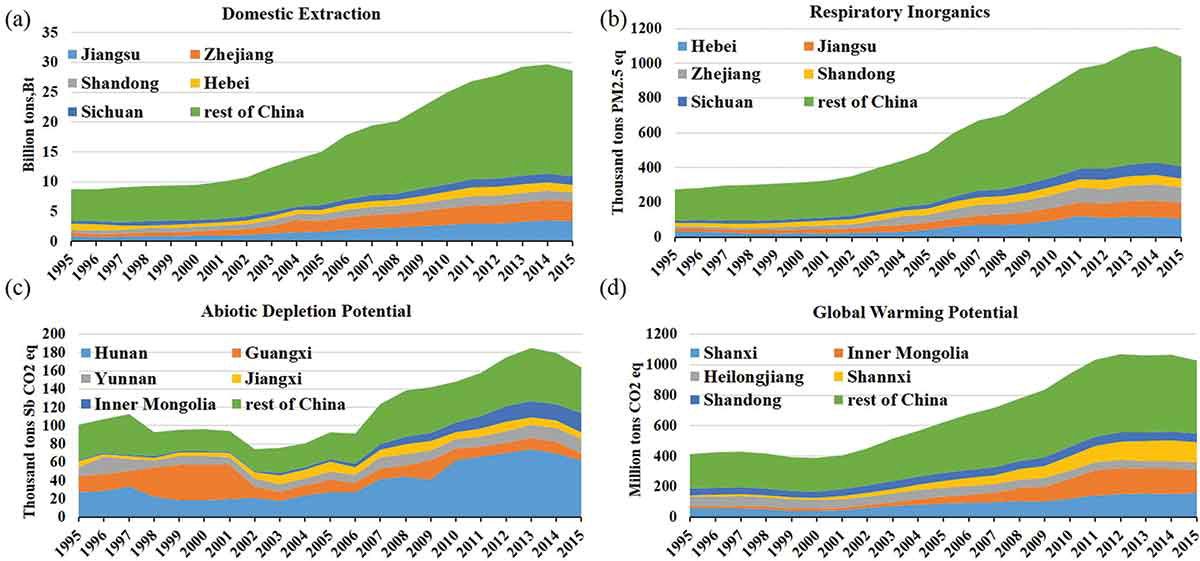Wang, He-Ming; Wei, Yao*; Zhao, Shen; Liu, Guang-Xin; Ma, Fengmei; Wang, Guo-Qiang; Wang, Yao; Wang, Xin-Zhe; Yang, Dong; Liu, Jing-Ru; Wang, Hong-Tao; Shi, Feng; Chen, Wei-Qiang*
Ecosystem Health and Sustainability 2020 6 (1), 1812434. DOI: 10.1080/20964129.2020.1812434
Abstract
Introduction: Over the past two decades, China has experienced rapid economic development, which has not only led to a rapid increase in the use of raw materials but has also created environmental problems. This research analyzes the environmental impacts of resource extraction in China at the provincial level, and fully considers the environmental impact of various resources extraction. In addition, it is the first time to quantitatively study the spatial pattern and evolution characteristics of the environmental impacts of China’s resource extraction from multiple perspectives by means of spatial visualization.
Outcomes: The results showed that the center of gravity of abiotic depletion potential (ADP) moved northwest, respiratory inorganics (RI) moved southwest and global warming potential (GWP) moved west. The results of the standard deviation ellipse showed that RI and GWP varied over time and space, while ADP showed a discrete trend. In addition, the distribution of the four in the northeast-southwest direction became more prominent.
Conclusion: To mitigate the environmental impacts of resource extraction, we recommend that regional governments implement measures to control environmental impacts in the provinces within the distributed ellipse and design targeted policies based on actual conditions.
General trends in the environmental impacts of resource extraction in China. (a) Trends in domestic extraction (DE) of resources; (b) Trends in RI; (c) Trends in ADP; and (d) Trends in GWP.
